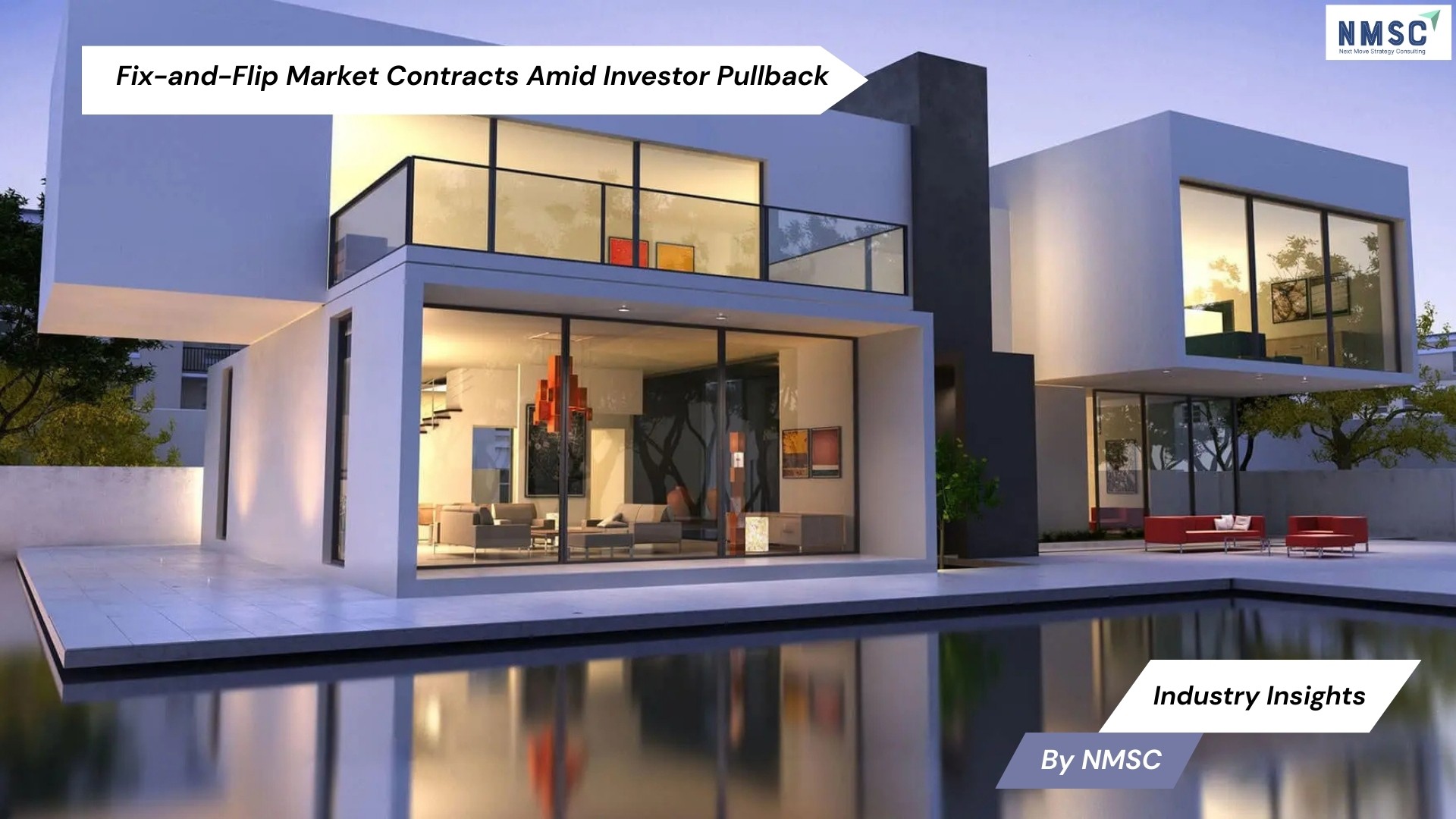Fix-and-Flip Market Contracts Amid Investor Pullback
Published: 2025-09-05

Industry Insights from Next Move Strategy Consulting
The global real estate market moves Higher interest rates and tightening labor availability are reshaping the dynamics of the fix-and-flip housing sector. Investor activity contracted modestly in the second quarter of this year compared with the first quarter, and more sharply against the same period in 2024, according to a joint index from John Burns Research and Consulting and Kiavi.
A Market Under Pressure
Sentiment among flippers continues to weaken, with just 30% reporting “good” sales in the second quarter, down from 38% a year earlier. The slowdown reflects economic uncertainty, elevated mortgage rates, and growing resale inventory, all of which are extending days-on-market for flipped properties.
“The velocity of housing turnover is critical,” explained Arvind Mohan, CEO of Kiavi. “When transactions take longer, capital remains tied up, limiting investors’ ability to reinvest in new opportunities.”
Core Findings from the Index
The index, which surveys roughly 400 flippers, tracks sales, future expectations, and competition for deals. All three categories recorded declines last quarter. Additional findings include:
-
Labor Challenges: Roughly one-third of respondents cited reduced workforce availability, driven by immigration enforcement and absenteeism.
-
Costs and Returns: Labor and material expenses reached record highs, though costs as a share of sales price remained flat. Return on investment continues to hover around 30%–31%.
-
Professional Caution: Experienced investors are scaling back acquisitions, choosing fewer deals in order to safeguard ROI metrics in a resetting market.
Regional Disparities Emerge
Flippers in Florida, Northern California, and the Southwest reported the weakest sales performance, as these regions face higher resale supply, intensified competition from homebuilders, and rising insurance costs.
Nationally, home prices in June were just 1.7% higher than the prior year, according to Cotality—well below inflation levels. Monthly price growth slowed to 0.1%, marking the weakest pace since 2008. Several overheated pandemic-era markets have already turned negative.
Lenders Adjust to Volatility
With conditions softening, lenders are recalibrating. “Over the last 12 months, we have gotten tighter in our credit box and more selective about which customers we work with,” Mohan noted. “The environment remains relatively volatile.”
Strategic Outlook
The convergence of higher financing costs, labor constraints, and slower price appreciation is prompting a more conservative stance across the fix-and-flip market. As professional investors reduce exposure and lenders exercise caution, the sector is entering a period defined by selectivity, longer timelines, and disciplined capital deployment.
Source: CNBC
Prepared by: Next Move Strategy Consulting
















Add Comment